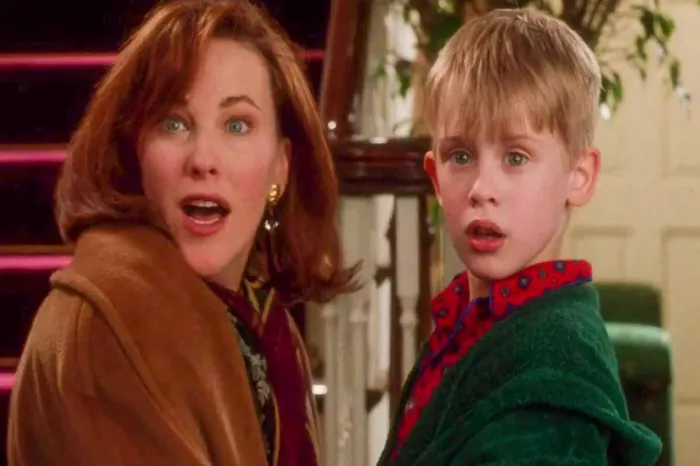“Home Alone,” the iconic holiday film that captured the hearts of audiences worldwide, was inspired by a combination of personal experiences, creative vision, and cultural influences. From its inception to its eventual release, “Home Alone” drew inspiration from various sources, resulting in a timeless classic that continues to resonate with audiences of all ages. Let’s explore the origins and inspirations behind the creation of “Home Alone.”
John Hughes’ Personal Experiences
The genesis of “Home Alone” can be traced back to writer-producer John Hughes’ own experiences as a parent and traveler. Hughes, known for his keen understanding of family dynamics and adolescent angst, drew inspiration from his own life as a father of two sons. The concept of a child being accidentally left behind by his family while they went on vacation resonated with Hughes, tapping into universal fears and anxieties about parenthood and the safety of children.
Childhood Fears and Fantasies
“Home Alone” also draws on common childhood fears and fantasies, such as being left alone and having the house to oneself. The idea of a child being left to fend for themselves and outsmarting would-be intruders taps into the power of childhood imagination and resourcefulness. By placing a young protagonist in a situation where he must rely on his wits and ingenuity to protect his home, “Home Alone” appeals to the sense of empowerment and adventure that many children dream of experiencing.
Slapstick Comedy and Farce
In crafting the comedic elements of “Home Alone,” writer-producer John Hughes drew inspiration from classic slapstick comedies and farces. The film’s premise lends itself to physical humor and over-the-top antics, with protagonist Kevin McCallister setting elaborate traps to thwart the hapless burglars Harry and Marv. The comedic timing and slapstick sequences in “Home Alone” pay homage to the traditions of silent film and vaudeville, appealing to audiences of all ages with its timeless humor.
Holiday Spirit and Family Values
Home Alone” is set against the backdrop of the holiday season, capturing the magic and warmth of Christmas. The film celebrates timeless holiday traditions such as family gatherings, festive decorations, and acts of kindness and generosity. Through the character of Kevin McCallister, “Home Alone” emphasizes the importance of family, love, and forgiveness, themes that resonate deeply with audiences, especially during the holiday season.
Cultural Influences and Traditions
Home Alone” reflects the cultural influences and traditions of its time, incorporating elements of 1990s American suburban life into its narrative. From the suburban McMansion where the McCallister family resides to the bustling streets of New York City, the film paints a vivid portrait of contemporary American society. The soundtrack, featuring classic holiday songs and original compositions, further enhances the film’s cultural resonance and emotional impact.
Childhood Fantasy vs. Adult Reality
At its core, “Home Alone” explores the tension between childhood fantasy and adult reality, juxtaposing Kevin’s wish for independence and adventure with the harsh realities of being home alone. While Kevin initially revels in his newfound freedom, he soon learns that being alone comes with its own set of challenges and responsibilities. Through Kevin’s journey, the film navigates the complexities of growing up and finding one’s place in the world, striking a chord with audiences of all ages.
The Power of Imagination and Creativity
“Home Alone” celebrates the power of imagination and creativity, as Kevin uses his resourcefulness to outsmart the burglars and protect his home. From constructing elaborate traps to staging fake parties and using mannequins to create the illusion of a bustling household, Kevin’s ingenuity knows no bounds. The film encourages viewers to tap into their own creativity and problem-solving skills, reminding us that even the smallest and youngest among us are capable of great things.
Universal Themes and Appeal
Ultimately, what makes “Home Alone” so enduringly popular is its universal themes and appeal. The film speaks to audiences of all ages with its blend of humor, heart, and holiday spirit. Whether you’re a child dreaming of outsmarting burglars or an adult longing for the magic of Christmas, “Home Alone” offers something for everyone. Its timeless message of family, love, and resilience continues to resonate with audiences around the world, making it a beloved classic for generations to come.
Conclusion
In conclusion, “Home Alone” draws inspiration from a variety of sources, including John Hughes’ personal experiences as a parent, childhood fears and fantasies, classic slapstick comedies, holiday traditions, cultural influences, and universal themes of family and resilience. By combining these elements with humor, heart, and holiday spirit, “Home Alone” has become a timeless classic that continues to capture the imaginations of audiences worldwide.
Related Topics:
Donald Trump’s Way Into “Home Alone 2”
Who is Harry Lyme in Home Alone?

